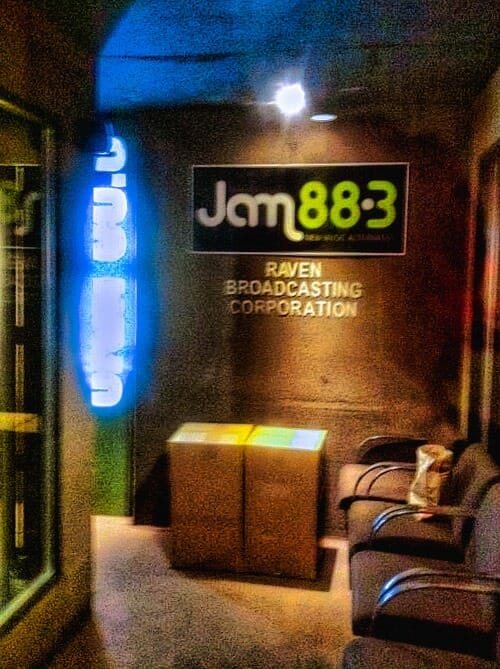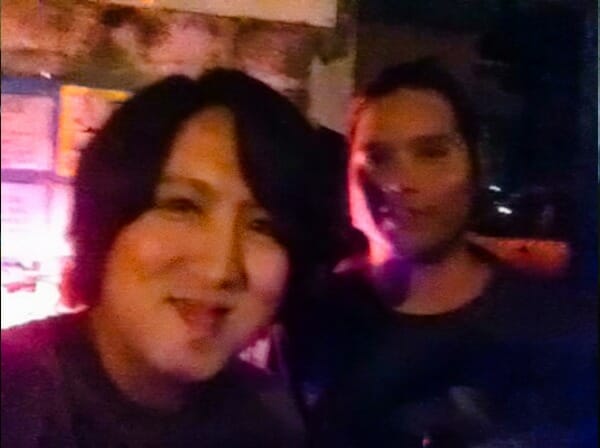I remember indie rock when I was a kid collecting hard-to-find cassette tapes and Top 40 t-shirts as rather a fetishistic diversion that motioned my interest toward a culture-system kind of reference where the ‘artist-as-subject’ is notionally more important, rather than an information-based category commodifying style, influence or attitude that is but clearly impersonal, as to allocate media for its blinding material if not spectacular determination. How people consume mediaspeak and tropes are signs therefore of the emerging proliferation of commodity-fetishism foisted on Ann Kaplan’s term of the “televisual apparatus” in which the textuality between audience (listeners) and television (musicianship) produces a network of signifiers losing touch of the historical moment in music, hence emblematic of the Baudrillardian ‘Universe of Communication’; for it is the televisual (musical) apparatus that is partly responsible for the kind of consciousness that no longer thinks in terms of an historical frame.
In context, I used to sense the indie nation as a city othered by spatial projections. It is not a democratized music space after all that homogenizes sex, age, culture, and sui generis language subsisting in the space of its own self-reflexive truth. As I grew up tugging at what was a counternarrative to pop music I realized that the indie culture has successfully maintained a DIY (Do-It-Yourself) ethic and, to foreground its offbeat hyperrealist condition, has persisted creating a lyrical complexity and sometimes, with an infused Pinoy indie soul, a cult following. Filipino journalist Karl De Mesa, on probably contemplating the future of Original Philippine Music or OPM, stated in his book Radiant Void that indie musicians have finally found “the spirit of liberty and free will” in this subculture. Being an indie kid in the 90s rigged by postmodern televisual discourses was nevertheless so cool, so aurally me.

Route 196, a favourite live music venue in Katipunan, north of Metro Manila. Photo courtesy of Lawdenmarc Decamora.
In music studies, the word ‘indie’ is clearly a postmodern phenomenon. It does not share a common meaning, denotation, or a particular ideology in a jungle of information like the city which is its touchdown authority heralding context, diversity or what Roland Barthes termed as the ‘pheno-song’ or a musical text performed functionally at the service of communication, of representation, of expression. However, it is apparent that everything about indie is disenfranchised: the body, the vision of a self-authenticating indie canon, and the city as site of subject-formation and floating signifiers which people do not necessarily perceive. The indie culture blurs the liminal which leads to the dismantling of the artificial barrier between ‘the mainstream’ and ‘the independent’: such is an offshoot of local indie bands getting signed by major labels, if small labels like Terno or Lilystars will not suffice for a space of wider circulation, or of democratized musical avenues—from the old Dredd to modern urban nightscapes like SaGuijo and Route 196—only for the educated masses who appreciate difficult, serious music. Because to define a phenomenon, say the word ‘indie’, according to Catherine Belsey in an interview, is also “to demarcate, to impose bounds, to restrict.”
Since the Barthesian treatment of indie music thrives more on the ‘pheno-song’ category, that is, fully preoccupied with spatio-temporal issues of nuance, connotation, context, and the like, listeners who like the analysand are regarded as auteurs by their performative meaning-making. The semiotic response to configuring the signs in a discursive fashion and to how they are perceived by the listener definitely echoes the process—that is, shaped by narratives—that concerns semiology in this essay. Again, the auteur, who I describe as a musical heavyweight, inscribes meaning and is actively engaged in the making and remaking of the urban landscape. Within the indie community shared interactions abound as a way of structuring an architectonic striation of perspective, identity, of a resistant ideology, or of a habitus making indie as a counternarrative to mainstream culture.

Philippine’s indie titan Mikey Amistoso playing at SaGuijo. Photo courtesy of Lawdenmarc Decamora.
The Flâneur Contracting Semiology in a Counter-Hegemonic Indie Culture
In an information-saturated city, Walter Benjamin’s image of the flâneur survives time and space, materiality and subsistence, on an endless theorizing and challenging of the official narratives of everyday life, a fixed emplotment, so to speak. I would like to discuss the role of Benjamin’s flâneur because this signifying agent undergoes evolution which further articulates a semiotic engagement with social texts—car horns, road signs, pollution, among others. In other words, the flâneur chronicles the cultural condition and life of people because he himself is also part of the city’s emerging narrative space. Everything is situated and de-situated—the phonic, the visual, and other sensory stimuli respond to a state of emergency. Manila, according to studies, is a flat city where transference and mobility leading to survival and moral panic is possible. What remains is a trap, a mental trap, a constant state of digression pre-empting a causal result. Apparently the indie community consists of very young audiences coming from the different dimensions of the art culture, which Michael Taussig believed to be trapped in a “state of emergency which is not the exception but the rule, where every possibility is a fact.”

Jam 88.3 is a recognized radio station in the Metro known for homegrown and foreign indie music. Photo courtesy of Lawdenmarc Decamora.
The indie music culture provides a counternarrative text, hence indie songs seemingly penetrate local soundscapes as well as the flâneur’s introspective, reflexive gaze which understands the critical locutions of city life. Moreover, the flâneur probes on the myth as a loaded signifier surrounding the city. He generates meaning as everything in the city can be a myth or not; however, he is left with the logic on how to filter signifiers received by the stimuli, as ‘meaning-making’ in this sense is a unifying sensorial function. As a matter of fact, Barthes says in Mythologies that “every object in the world can pass from a closed, silent existence to an oral state, open to appropriation by society for there is no law, whether natural or not, which forbids talking about things.” Now the availability of indie songs within public consumption proves that their content or lyrical messages are subjugated to pop culture which is the contextual site for both hegemonic and counter-hegemonic discourses.
Manila has become a narrated society which the flâneur tries to interpret relying predominantly on scattered signs emanating from the communicated language of the society. This language in the form of tropes, icons and metaphors submits aural references and not just information which cannot be decoded into affects or broken down into Barthesian semantic signs. Christopher Norris is right into staking his claim that writing is the ‘exile’, the ‘wandering outcast’ of Western logocentric tradition. Here the flâneur writes eternally by romancing the signifiers which in turn can be translated into “small shy stories” or counternarratives gathered from ‘open-minded’ spaces (as to borrow Marshall Berman’s term) such as the fringe communities, the margins or the indie culture society.
Signs of life are paradoxically relished in the aesthetic stature tempered by indie artists themselves, among these signs are relegated to unusual urban activities—drug addiction, teenage riot, rebellion—which fuel moral panic and at the same the tendency to transgress. I believe indie artists avoid the space of entrapment; they prefer a more fluid, open-minded rather than a sedentary, close-minded space. Like the postmodern flâneur, the indie artist favours the imperfect, the traumatic, the have nots—all what the anti-phallocentric culture desires.
Ind(i)pendent Manila: Articulating the Future of OPM
Three contemporary indie songs by Filipino bands are the subject of the apparent lyrical complexity that deconstructs Manila. The songs viewed Manila as a fragmented city without a clear center, poeticizing a “third space” the flâneur occupies riddled with resonating complications. First, I tried to trace the spatial semiotics of DV (short for Manila’s sub-disrict ‘Divisoria’) by the band Cambio which catalogues the persona’s remembered or new found places starting from Divisoria to touring around neighbouring places—the sites of ‘in-betweenness’ where meaning gravitates—and then finally reifying Divisoria to be his (possibly the flâneur’s or hillbilly’s) ideological construction of home: the mapping of social centrality.
The familiar Divisoria is always peopled with informal settlers, intense hagglers, and busy vendors who—like sardines!—stock themselves up on the hot corners of the marketplace. This is Divisoria that Filipinos know, but the persona pretending to be the flâneur is lost and alternatively seeking recovery from a new inner city which is not the commodity-freighted Manila. For the persona, all the staggering places mentioned in the lyric such as “vito cruz, taft, and alabang” signify an ‘interconnectedness’, as these topographic areas are not too far away from each other. Their adjunctness moreover will convince listeners that cataloguing is an effective technique in mapping the inner city of mental euphoria. The places surrounding Divisoria are not conscientiously capitalized in the lyric where the persona’s perceived center offers a sense of sociation or perhaps opportunity: “Sinong marunong pumunta? / Pwede ba ‘kong sumama sa / Divisoria?”
Another indie song re-imaging Manila is The Building’s Manila is a Trap. The message of the text is clear, “Why do you make me feel so bad / if you want me to come back?” The vibrant sensation of a decentered other—in this setting, the flâneuse as lover—echoes city life from parking lots, walkways, as if the signs of everyday were a mortal maze that might frustrate or glorify the human spirit. The persona is a woman who has spent few years stuck in a buoyant relationship. She describes the desire to cancel the relationship at her behest as one would cleverly escape a maze like Manila with high hopes of urban renewal: “so many streets / and only one of me.” What the bitter reality offers in a relationship clearly sees the persona using Manila as a metaphor in order to depict her status. She is being configured and reconfigured by the flowing signs of emotions and indecisions as if literally “drowning in a big city.” At the end the persona accepts to love the trap or sense of containment she continues to sight. There is loss and recovery in this kind of trap, a mental cul-de-sac that enthuses metamorphosis. Here Manila is utterly a trap where, say, in a state of emergency, it can make the individual the present ‘other’ in an absent part of the self—herself. And so the rubric (which I think should have been the ending) situates the persona in a dialogic encounter with Manila, “You’re not the only one that I’ve been absent from.”
The role of the flâneur originally comes from Benjamin’s postmodern activity of “botanizing on the asphalt” in which he acts like a journalist or a scientist paying close attention to the throbbing of the city’s heartland that is the inner city or the Manila we know gazing at the flâneur or the collective ‘us’. In the local context it is Manila now that is performing the role of the flâneur in interpreting the distancing gaze he throws. The supposed space of representation all of a sudden brandishes intent on “discerning the strange in the familiar and the familiar in the strange” (Chatterton & Hollands 246). This instance gives us Hello Strange written by Paranoid City, another local indie band who like The Gory Orgies hinted “OPM is not dead.” Hello Strange climbs down the ivory tower because here the city is viewed as language totally fragmented and parsed. But these fragments or locked images—“traffic lights / broken signs / lead the way”—free the signifiers which translate the nature of discourse we have with society. Vocalist Dax Balmeo sang “we are living” which only means that the flâneur in us is like a musician who will always be ready to bring to the fore a counternarrative disputing traditional major label policies.
With the advent of laptops, synths, mixers and other musical gadgetry, the DIY ethic endeared by small indie labels is back on track.
The confident lines “hollow lines / stupid fines / driving through” catapult us into the reality of indie band’s artistic struggle. “Viewfinder dream” leaves band members “driving through” and “leading the way” for fan’s to appreciate (their) art or, in a more contextualized aim, to save OPM from contracting thick colonial legacies. In a nutshell, the future of OPM really lies on the current impact of indie music to popular culture. The indie culture keeps artistry aground since in today’s music industry the story, explains Lourd de Veyra, will “always be an issue between the haves and the have-nots.” So the promise of “so long / so long” in Hello Strange repeatedly lives on.
Lawdenmarc Decamora

The author (left) posing with Diego Mapa (right) of Cambio at a gig in 70s Bistro. Photo courtesy of Lawdenmarc Decamora.
Opinions expressed in this article are the author’s own and do not necessarily reflect FORSEA’s editorial stance.

